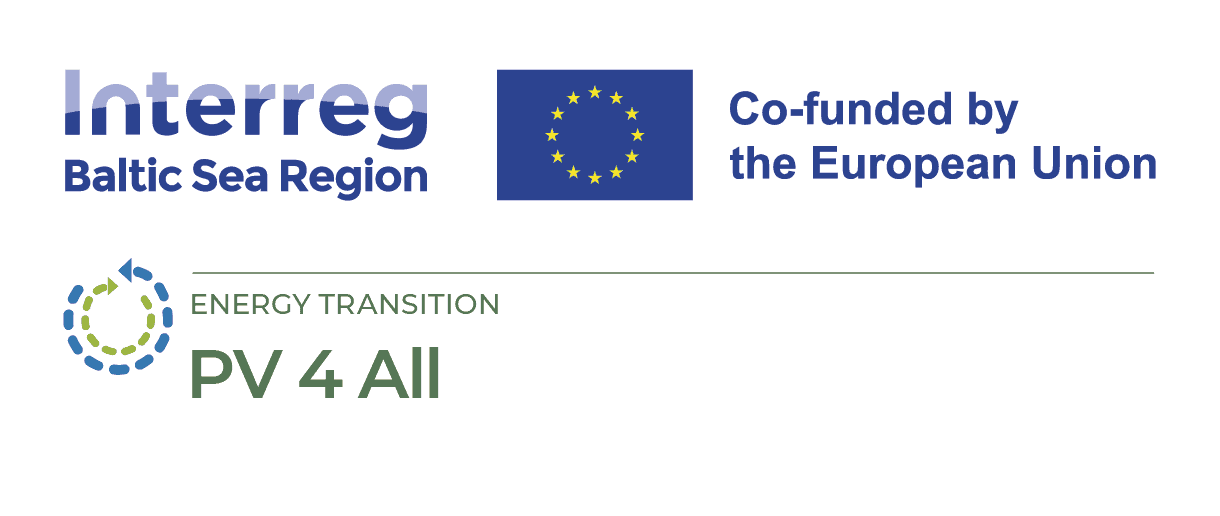
PV4All: Emerging PV applications in Lithuania
12 September 2024
In spite of this, new technological solutions have recently emerged, making solar energy available for every part of society, however bringing new challenges to the solar energy sector. Their promotion and increased development requires wider inclusion of publicity and wider stakeholder information, contributing to the accelerated development of new solutions.
Recent applications in Lithuania include the use of PV for heat generation, mini PV or so-called balcony solar power plants, as well as the use of solar on noise-reducing walls on railways and motorways.
PV and heat pumps for heat generation
A multifunctional solar power plant and heat pump system can perform a variety of functions, such as heating in winter, cooling in summer, domestic water heating and electricity supply all year round. Depending on changes in the environment, the system could operate in different modes to make full use of renewable energy sources. The multifunctional system could thus make full use of solar energy and a heat pump to provide energy for residential and other buildings.
The experimental data could serve as a model for the development of a practical solar photovoltaic and heat pump system. Hybrid systems combining an air-to-air or water-to air heat pump with photovoltaics offer the possibility to significantly reduce the electricity consumption and operating costs of heating systems in renovated buildings with relatively high supply temperatures. The use of solar electricity and heat pumps is a very cost-effective and environmentally friendly way of retrofitting apartment buildings.
Plug-in PVs
Plug-in PV was only legalised in Lithuania in 2023, but is attracting more and more attention from potential consumers.
Germany and Austria are the leading European countries in terms of the number of “balcony” mini PV plants installed. Recently, they have been gaining popularity in other countries, including Lithuania, as well. A mini PV does not necessarily have to be installed on a balcony. Other installation methods are also possible, like on the roof, terrace, garages, and even on outside furniture, like tops of tables, etc. In most cases, the microinverter is mounted on the solar panel. Depending on the manufacturer, the microinverter may also be integrated into the solar panel.
As with larger PVs, it is not recommended to go for the cheapest, uncertified equipment from unknown manufacturers. It is highly recommended that at least the inverter manufacturer’s representative (service) is located in Lithuania.
In Lithuania, PVs can produce ~1000 kWh/year from 1 kW, according to long-term observations. This is not the amount of energy that should be expected from a mini PV. It will often be difficult to ensure good operating conditions when installing a mini PV plant. The price of such plant is between 400 and 2000 €. At the moment payback for such plants is approximately between 3 and 5 years even without support.
Photvoltaics in railway and paved roads infrastructure
Recently, pilot projects have been launched where solar PV is installed on the south side of noise barriers next to the railways. There is also significant potential along major motorways.
LTG Infra, the manager of the public railway infrastructure, launches a pilot project to install and test a solar power plant on a sound-reflecting wall. This initiative will contribute to the company’s Energy Efficiency objective of introducing measures to ensure the efficiency of electricity production and consumption. The planned solar power plant has a capacity of 22 kW and is expected to generate around 13,600 kWh per year.
Lithuania has almost 14,000 kilometres of paved roads. Unfortunately, not a single metre of them is used for renewable electricity generation, despite the abundance of both noise barriers and green dividing strips. The same is true of the rail network. Thousands of hectares of buffer zones around railways are still unused. If trains were to be electrified, the electricity generated in such areas could be used immediately for electric trains. This would reduce the cost of travel for passengers and reduce freight rates.
Quality ensuring
As more and more PVs are purchased and installed, their quality aspects become particularly important.
Testing of PV panels existing on the market it Lithuania disclosed that the share of panels with lower PMAX value than declared makes 25.10%. Besides possible losses in the system may be also due to non-compatibility of panels, losses of installation as well as DC/AC conversion losses in inverters.
Thus certification objects are: 1. PV modules (self-declaration possible); 2. Inverters (DC/AC power converter); 3. PV module installation systems; and 4. Electrical wiring and safety measures. Certified products must comply with the essential requirements of the European standards on health, safety in use and environmental protection (CE marking).
These new trends need to be disseminated and publicised so that more stakeholders have reliable information, which is what the Lithuanian Energy Institute has been doing under the PV4All project. We want foreign partners to learn about the Lithuanian experience, so for more information from the PV4All workshops and the cooperation with Lithuanian Solar Energy Association and Lithuanian Thermal Engineers Association, please see the document “Good solar practice from Lithuania”.





